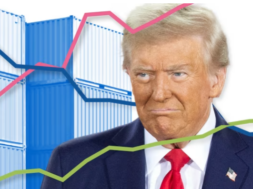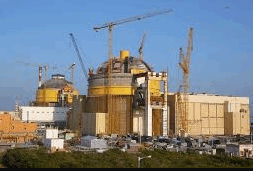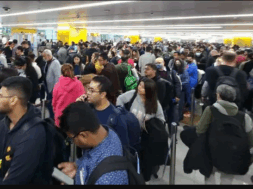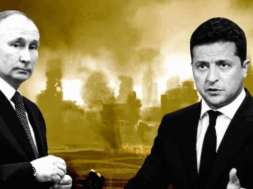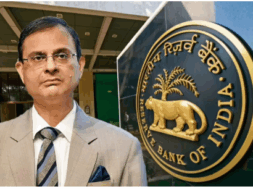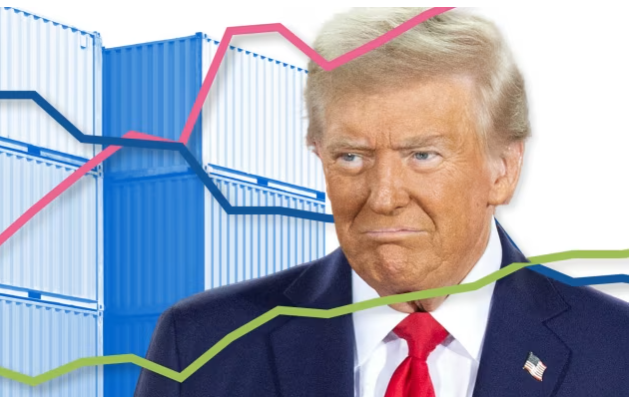
Roving Periscope: China slaps 34% on the US; IMF, WTO warn of threats to global economy
Virendra Pandit
New Delhi: Hours after US President Donald Trump unveiled his sweeping ‘reciprocal tariffs’ on America’s imports from nearly 100 countries, triggering uncertainties, instability, and confusion worldwide, the International Monetary Fund (IMF) and the World Trade Organization (WTO), among other multilateral institutions, have warned of a serious threat to global outlook.
In particular, the WTO said the world trade in goods could contract 1 percent. The IMF also cautioned against steps that could further harm the world economy, the media reported on Friday.
Amid the ongoing global trade war, China on Friday announced fresh ‘reciprocal’ tariff of 34 percent on all American goods, in direct retaliation to President Trump’s latest wave of trade duties. The new tariffs, set to take effect from April 10, mark a sharp escalation in the already tense trade standoff between the world’s two largest economies.
The Chinese decision follows a warning from Beijing just a day earlier, urging Washington to step back from what it called “unreasonable” measures.
“China firmly opposes this and will take countermeasures to safeguard its own rights and interests,” the Chinese Commerce Ministry said in a statement.
In India, which faces 26 percent tariff, Sensex plummeted 930.67 points or 1.22 percent to end Friday’s session at 75,364.69 and Nifty 50 slumped 338.05 points or 1.49 percent to close at 22,912.05. Sectoral indices, except FMCG, also ended lower.
The two benchmark indices plummeted because of global market instability caused by the US tariff announcements. Analysts warned that these duties could shave off up to 3 percent from Nifty’s FY26 EPS, although the ongoing Indo-US trade negotiations may soften the blow.
Despite near-term volatility, India’s strong macro fundamentals—resilient consumption and easing inflation—support a positive long-term outlook.
The Nifty Metal index saw steep losses, with Hindustan Copper, National Aluminium, Vedanta, Hindalco, and NMDC tumbling over 6 percent. Pharma stocks were hit hard, crashing 6 percent after Trump threatened “unprecedented” tariffs on pharmaceutical imports.
As the global turmoil started unfolding, the IMF and WTO warned that the reciprocal tariff measures pose a serious threat to global outlook and world trade.
The WTO estimated that the sweeping US tariffs on imports across sectors and countries could lead to an overall contraction of around 1 percent in global merchandise trade this year while the IMF has cautioned countries against taking any step that could further harm the world economy.
“While the situation is rapidly evolving, our initial estimates suggest that these measures (reciprocal tariffs), coupled with those introduced since the beginning of the year, could lead to an overall contraction of around 1 percent in global merchandise trade volumes this year, representing a downward revision of nearly four percentage points from previous projections,” WTO Director-General Ngozi Okonjo-Iweala said in a statement.
She said she was deeply concerned about this decline in world trade and the potential for escalation into a tariff war with a cycle of retaliatory measures that lead to further declines in trade.
President Trump announced sweeping tariffs, ranging from 10 percent to 49 percent, on almost all trading partner countries on Wednesday representing a historic tax increase that threatens to disrupt world trade. This could push the US into trade wars with many countries, including China and the EU, threatening retribution.
China was slapped with tariffs of 34 percent, the EU with 20 percent, Vietnam with 46 percent, Taiwan with 32 percent, Cambodia with 49 percent and Bangladesh with 37 percent.
IMF Managing Director Kristalina Georgieva said that her institution was still assessing the macroeconomic implications of the announced tariff measures, but they clearly represented a significant risk to the global outlook at a time of sluggish growth. “It is important to avoid steps that could further harm the world economy. We appeal to the United States and its trading partners to work constructively to resolve trade tensions and reduce uncertainty,” she said.
The WTO DG said that it was important to remember that despite these new measures the vast majority of global trade still flows under the WTO’s Most-Favored-Nation (MFN) terms. “Our estimates now indicate that this share currently stands at 74 percent, down from around 80 percent at the beginning of the year. WTO members must stand together to safeguard these gains,” she said.
More than a dozen countries set for US reciprocal tariffs spent the first day of Trump’s tariff rollout not only bracing for the economic fallout but with confusion about exactly what rates they might face.
A White House annexure listing future reciprocal tariff rates initially differed for at least 14 economies from what was on the charts presented when Trump announced his “Liberation Day” tariffs in the Rose Garden. In each case, they were higher by exactly one percentage point.
On Thursday, the White House adjusted the annex rates downward to reflect the slightly-lower numbers first shown in the charts Trump displayed.
This is important because, under the executive order implementing Trump’s reciprocal tariff policy, all US trading partners start at a global 10 percent tariff from April 5. Four days later, those listed in the annexure — and only those in the annex — would have their rates elevated to those set out in that document.
In the annex document, India’s rate was originally listed at 27 percent, rather than the 26 percent shown previously by Trump, before later being revised down to 26 percent. South Korea’s was at 25 percent in the charts, then 26 percent in the annex, now back to 25 percent. Others with fluctuating rates included Botswana, Cameroon, Malawi, Nicaragua, Norway, Pakistan, the Philippines, Serbia, South Africa, Thailand, Vanuatu, and the Falkland Islands.
Even President Trump confounded many when he reiterated that he is open to reducing tariffs for ‘phenomenal offers’ from the affected countries, indicating that the White House was open to negotiations despite the insistence of some top officials.
He also reiterated that he would in particular be willing to offer tariff relief for China if Beijing approved the sale of the US operations of ByteDance Ltd.’s TikTok social video app. The service is facing a Saturday deadline for divestment, unless Trump offers an extension as part of his efforts to broker a deal.
Trump, speaking on Air Force One on Thursday, broadly defended his tariff program despite a selloff in the stock market, saying he was happy that interest rates were falling and believed that economic turbulence would settle.
He also indicated he spent the day in conversations with parties seeking tariff relief. He spoke to automaker executives, as well is Israeli Prime Minister Benjamin Netanyahu, who Trump said could visit the US next week.
Israel earlier this week removed its tariffs on US goods in hopes of being spared from Trump’s tariffs, but the White House announced that Israeli goods would face a 17 percent rate.
The US President also said he believed the United Kingdom was happy about its treatment under his new tariff regime. The UK is facing the minimum 10 pe cent tariff, while European Union nations have seen a 20 percent rate imposed.
